Refine listing
Actions for selected content:
18 results in Cambridge Elements
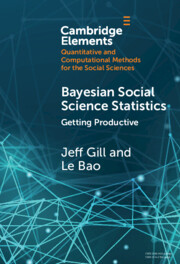
Bayesian Social Science Statistics
- Getting Productive
- Coming soon
-
- Expected online publication date:
- October 2025
- Print publication:
- 30 September 2025
-
- Element
- Export citation
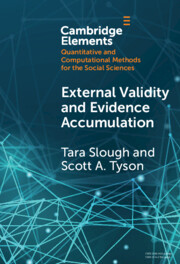
External Validity and Evidence Accumulation
-
- Published online:
- 29 November 2024
- Print publication:
- 02 January 2025
-
- Element
- Export citation
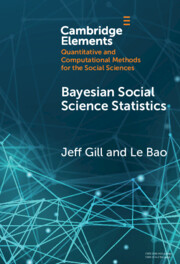
Bayesian Social Science Statistics
- From the Very Beginning
-
- Published online:
- 24 October 2024
- Print publication:
- 24 October 2024
-
- Element
- Export citation
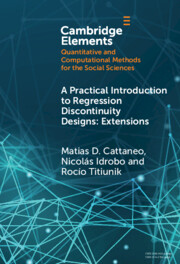
A Practical Introduction to Regression Discontinuity Designs
- Extensions
-
- Published online:
- 25 March 2024
- Print publication:
- 11 April 2024
-
- Element
- Export citation
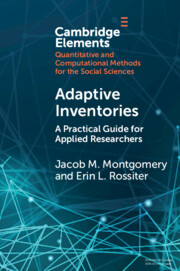
Adaptive Inventories
- A Practical Guide for Applied Researchers
-
- Published online:
- 08 July 2022
- Print publication:
- 28 July 2022
-
- Element
- Export citation
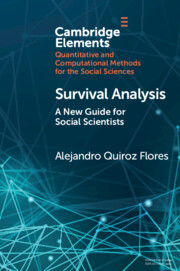
Survival Analysis
- A New Guide for Social Scientists
-
- Published online:
- 03 May 2022
- Print publication:
- 26 May 2022
-
- Element
- Export citation
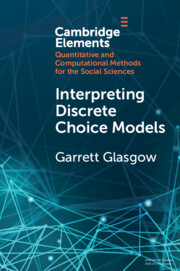
Interpreting Discrete Choice Models
-
- Published online:
- 21 April 2022
- Print publication:
- 12 May 2022
-
- Element
- Export citation
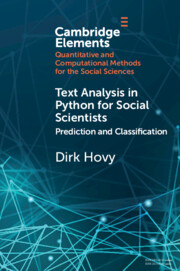
Text Analysis in Python for Social Scientists
- Prediction and Classification
-
- Published online:
- 15 February 2022
- Print publication:
- 17 March 2022
-
- Element
- Export citation

Modern Dimension Reduction
-
- Published online:
- 10 July 2021
- Print publication:
- 05 August 2021
-
- Element
- Export citation
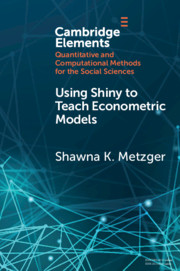
Using Shiny to Teach Econometric Models
-
- Published online:
- 01 May 2021
- Print publication:
- 20 May 2021
-
- Element
- Export citation

Unsupervised Machine Learning for Clustering in Political and Social Research
-
- Published online:
- 15 December 2020
- Print publication:
- 28 January 2021
-
- Element
- Export citation
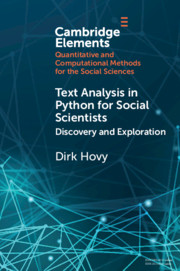
Text Analysis in Python for Social Scientists
- Discovery and Exploration
-
- Published online:
- 14 December 2020
- Print publication:
- 21 January 2021
-
- Element
- Export citation
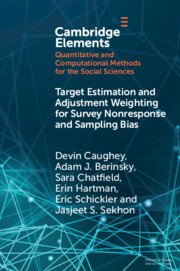
Target Estimation and Adjustment Weighting for Survey Nonresponse and Sampling Bias
-
- Published online:
- 29 September 2020
- Print publication:
- 22 October 2020
-
- Element
- Export citation
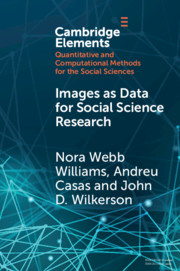
Images as Data for Social Science Research
- An Introduction to Convolutional Neural Nets for Image Classification
-
- Published online:
- 17 July 2020
- Print publication:
- 13 August 2020
-
- Element
- Export citation
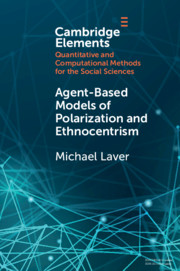
Agent-Based Models of Polarization and Ethnocentrism
-
- Published online:
- 13 March 2020
- Print publication:
- 16 April 2020
-
- Element
- Export citation
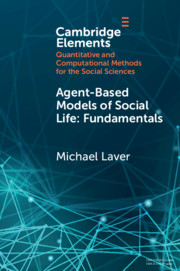
Agent-Based Models of Social Life
- Fundamentals
-
- Published online:
- 13 March 2020
- Print publication:
- 16 April 2020
-
- Element
- Export citation
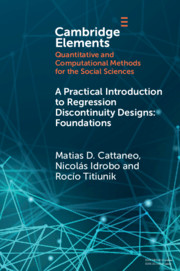
A Practical Introduction to Regression Discontinuity Designs
- Foundations
-
- Published online:
- 16 November 2019
- Print publication:
- 13 February 2020
-
- Element
- Export citation
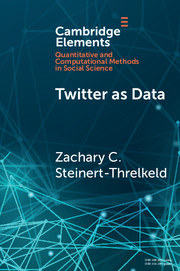
Twitter as Data
-
- Published online:
- 18 January 2018
- Print publication:
- 18 January 2018
-
- Element
- Export citation
